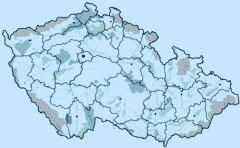Úvod - Českomoravské pomezí - Nové Hrady - NOVÉ HRADY

Tip: zvolte region z mapy
Zobrazit celou ČR
|
Zvoleno: Českomoravské pomezí - Nové Hrady - Hrady, zámky a zříceniny
|
| Region |
|
| Typ |
|
| Obec |
|
|
|
|
| Písecko, Strakonice a Táborsko, Břeclav a Pálavské vrchy, Krušné hory a podkrušnohoří, Beskydy, Hrubý a Nízký Jeseník, Praha hl.m., Západočeské lázně a Krušné hory západ, Šumava, Jižní Čechy, Jizerské hory a Frýdlantsko, Pardubicko, Chrudimsko a Hlinecko, Střední Čechy severovýchod Polabí, Krkonoše, České středohoří a Žatecko, Český ráj |
|
|
NOVÉ HRADY |
 |
|
Nové Hrady lies near the border with Austria on the south-east of České Budějovice. The origin of the town dates back to the 13th century when a settlement sprang up near a sentry castle along a trail from Austria to Bohemia. In 1359 the town became the property of the Rožmberk (Rosenberg) family and remained in its possession up to the beginning of the 17th century. It was destroyed by fire during the Hussite wars and badly damaged in the Thirty Years’ War. A new chapter in its history opened in 1620 when the Nové Hrady estate passed into the hands of the Buquoy family who continued to own it until 1945.
The visitor to Nové Hrady will find many historical monuments. One of the chief attractions is the castle that was built in the 13th century and further rebuilt between 1792 and 1798. It has been renovated and is now open to the public. In the city square you can see the 16th century city hall with the Buquoy coat-of-arms and the town crest on its façade, and the former lord's residence built in early Baroque style in 1634 -1635. East of the square one will find the Servite monastery (1679 -1685) and the Church of St. Peter and Paul, founded in 1284.
Other points of interest include a three-winged Empire style chateau, situated at the road leading to České Velenice (Gmund, Austria), and Therese’s Valley (Tereziino údolí), a beautiful park with many rare and exotic wood species. At the far end of the valley, towards Horní Stropnice, stands the fort Cuknstejn (1488 -1491) that has remained unchanged to this day.
Nové Hrady was also famous throughout Europe for its opaque black and red glass produced in the area in the 1800s.
|
|
|